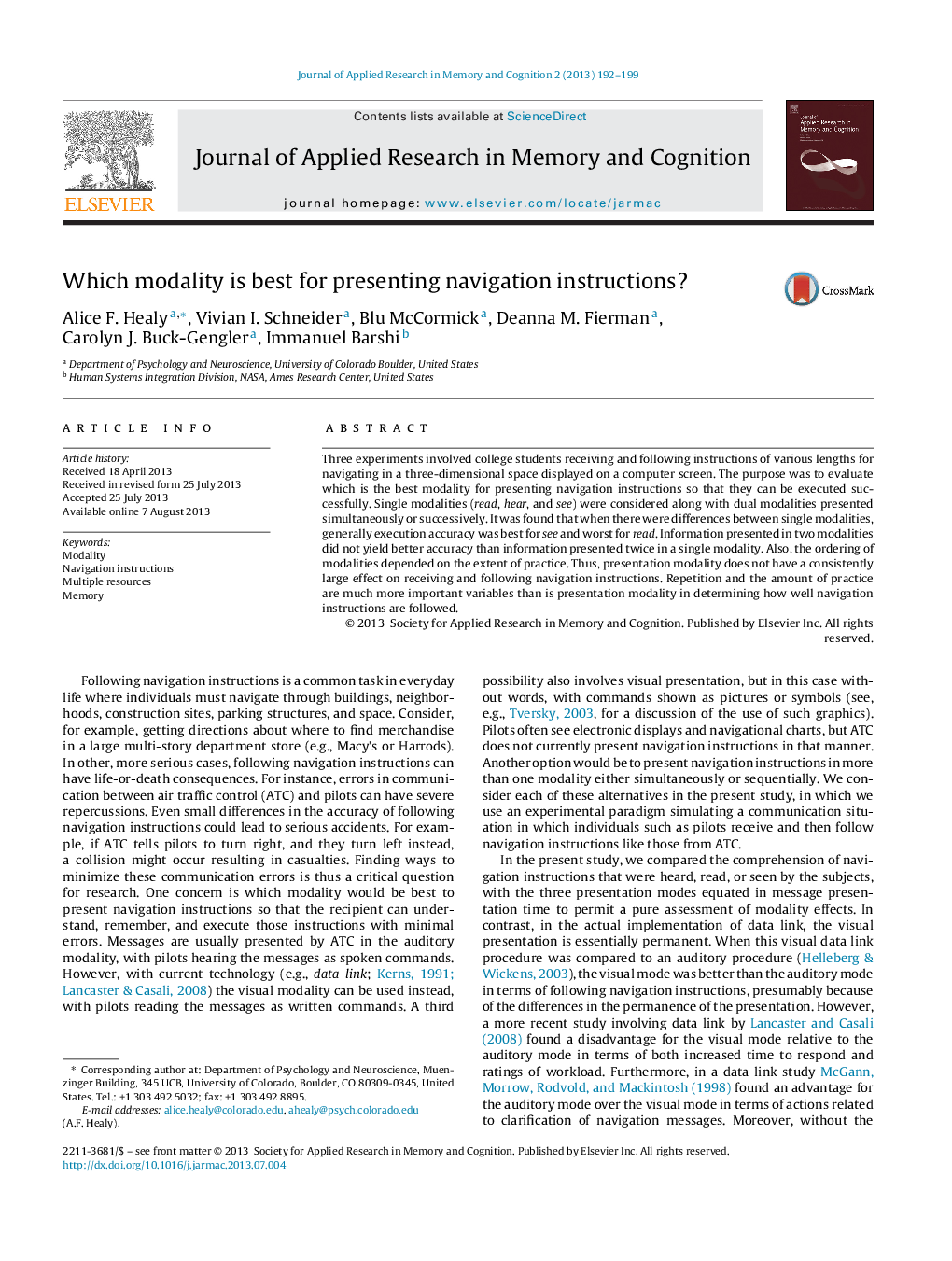| Article ID | Journal | Published Year | Pages | File Type |
|---|---|---|---|---|
| 881746 | Journal of Applied Research in Memory and Cognition | 2013 | 8 Pages |
•College students received and followed instructions for navigating in a three-dimensional space shown on a computer screen.•Single presentation modalities were considered along with dual modalities presented simultaneously or successively.•Generally, accuracy at following instructions was best for see (spatial) and worst for read (visual verbal) presentations.•Information presented in two modalities did not yield better accuracy than information presented twice in a single modality.•Repetition and practice are more important than presentation modality in how well navigation instructions are followed.
Three experiments involved college students receiving and following instructions of various lengths for navigating in a three-dimensional space displayed on a computer screen. The purpose was to evaluate which is the best modality for presenting navigation instructions so that they can be executed successfully. Single modalities (read, hear, and see) were considered along with dual modalities presented simultaneously or successively. It was found that when there were differences between single modalities, generally execution accuracy was best for see and worst for read. Information presented in two modalities did not yield better accuracy than information presented twice in a single modality. Also, the ordering of modalities depended on the extent of practice. Thus, presentation modality does not have a consistently large effect on receiving and following navigation instructions. Repetition and the amount of practice are much more important variables than is presentation modality in determining how well navigation instructions are followed.
